Things In Palestine May Never Be the Same Again
The conflict has shattered many myths about Israel’s invincibility—and shown once more that the only lasting solution is true equality for all.
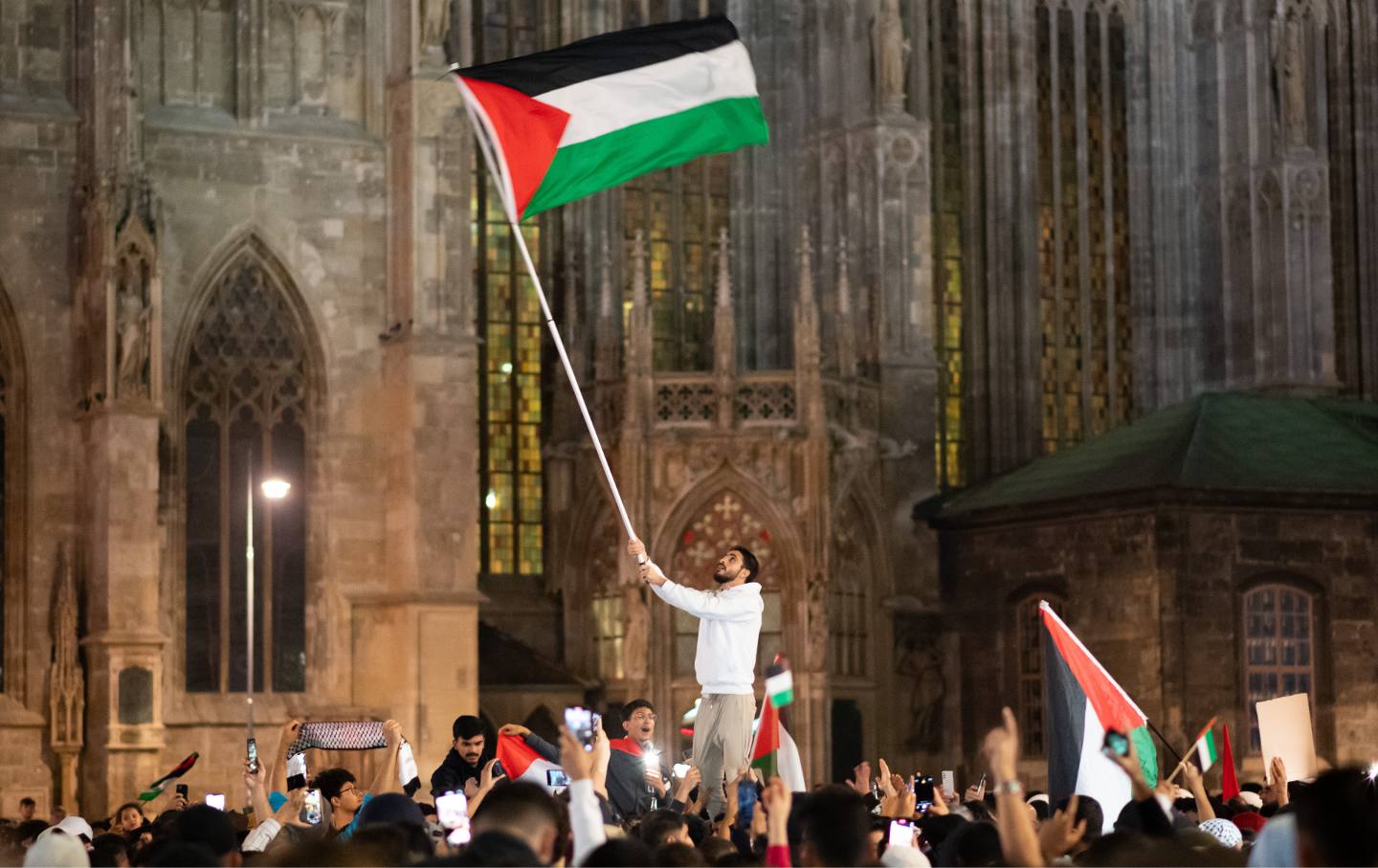
Demonstrators gather to show their solidarity with Palestine on October 11, 2023, in Vienna, Austria.
(Thomas Kronsteiner / Getty Images)The stunning surprise attack by Palestinian fighters from the Gaza Strip over the past few days has changed the contours of the Israeli conflict with the Palestinian people, possibly forever.
The attack—which took the form of a breakout from Gaza that most people thought would never be possible, given the extent of Israel’s clampdown on Palestinian life—came after a period in which it seemed that Western powers had united in their desire to treat Palestine as an afterthought.
Western leaders had managed to convince themselves that the question of Palestine was so immaterial, that Israel’s ability to suppress Palestinian resistance indefinitely was so assured, and that the wider Middle East had so thoroughly abandoned Palestine that they could prioritize the diplomatic normalization between various repressive Arab regimes and the equally (albeit differently) repressive regime that claims Jerusalem for its capital. According to this approach, the Palestinians—bottled up in their camps, enclaves, cells, and the giant open-air prison into which Israelis have turned the Gaza Strip—can be sidelined and forgotten about. And justice, rights, equality, and democracy—the favored slogans of the Western powers—can be forgotten about as well.
The most significant thing about the Gaza breakout is that it demonstrated once again that the Palestinians are not merely a scattered collection of hapless refugees led by a corrupt and servile collaborationist administration based in Ramallah, but still a people with agency of their own and the right, will, and determination to be free. The breakout shattered the self-satisfied Western sense of complacency and the many-layered myths of Israeli power, surveillance, and so-called intelligence—and it smashed, hopefully once and for all, the very idea that the Palestinians can just be ignored, talked to, or talked about rather than talking for and representing themselves, their interests and their rights.
Although most of the Western media coverage has focused on Palestinian attacks on Israeli civilians—which are undeniably wrong—the primary targets of the operation were demonstrably military in nature. To begin with, Palestinian fighters used explosives to blast through the complex mesh of concrete and steel that the Israelis have installed to turn Gaza into the gigantic prison that it is. They systematically stormed and destroyed a string of Israeli fortifications, checkpoints, machine-gun and snipers’ nests, watchtowers, barracks, and other military emplacements—including the dreaded Erez crossing point—that have been Israel’s primary tools in imposing a withering siege on Gaza’s population since 2005. They inflicted stinging losses on heavily armed Israeli soldiers and border guards and destroyed or disabled armored personnel carriers, bulldozers, and the supposedly impregnable Merkava IV tanks that are the pride and joy of the Israeli army and have been used for years to terrorize Palestinians lacking the kind of anti-armor weapons that Western countries have unquestioningly rushed to Ukraine in the name of resisting invasion, occupation and annexation.
Indeed, the sight of burning Israeli tanks gave the lie not only to the myth of the Merkava’s invulnerability—it turns out to be a tank that burns much like any other—but to the larger myth of omnipotent and omniscient surveillance, intelligence, and power in which Israel has long sought to cloak itself. This is a state project that is undoubtedly able to inflict massive destruction on a mostly defenseless and shelterless population, nearly half of whom are children. But it is hardly as invulnerable as it has tried to pretend, and, in any case, its capacity for sheer destruction does not, in itself, translate into the attainment of its underlying political objectives.
Seeing armed Palestinian fighters standing over disarmed Israeli soldiers was like witnessing events pulled out of the pages of Frantz Fanon’s classic anti-colonial work The Wretched of the Earth or scenes from Gillo Pontecorvo’s Burn! Those images were a reminder of what this has always been: a struggle between a colonial power driven by an exclusionary racial ideology and a battered, occupied, besieged, but still unwavering people. Notwithstanding mainstream news headlines with their carefully cherry-picked word choices (it is appropriate, for instance, to describe civilians as “hostages,” but soldiers in battle are “captured,” not “abducted,” and they become “prisoners,” not “hostages”), this is not a “war” between two sovereign states but a conflict between an occupying colonial power and an occupied people for whose welfare that occupying power is still ultimately accountable under international law.
Now that the meager resources accumulated over months to conduct the breakout seem to have been largely used up, that occupying power has turned the tables. Israel has already unleashed an unprecedentedly heavy (but characteristically indiscriminate) bombardment of residential districts in Gaza, bringing whole buildings down on the heads of the families living in them, without warning. Israeli bombers are now methodically reducing entire city blocks in Gaza to rubble. The Palestinian Ministry of Foreign Affairs accused Israel of adding incendiary and phosphorous bombs into the mix of high explosives—something done in order to spark fires among the ruins in a replay of the so-called Dahieh doctrine, named after the southern suburbs of Beirut that the Israeli air force similarly reduced to rubble in 2006.
Referring to the Palestinian population of Gaza as “human animals,” Israeli ministers have suspended all food, water, fuel, and electricity deliveries to the besieged territory, while warning the caged-in population to flee for their lives (how and where to, one wonders). They are using apocalyptic and even bluntly genocidal language to set the stage for the wave of blind vengeance and terror that is already underway. Like any of the countless examples that could be pulled from the blood-soaked annals of Western colonialism, violence and yet more violence is the only language the occupying power seems to speak or to understand.
And violence is the condition of possibility for the struggle unfolding in and around Gaza and the other parts of occupied Palestine right now. It will always be, until and unless the colonial condition that brought us to where we now stand is changed once and for all.
Arnon Sofer, the University of Haifa demographer widely credited as the architect of Ariel Sharon’s plan to withdraw Israeli forces from Gaza, surround the coastal strip, and cut it off from the outside world, recognized this when he drew up his plan in the mid-2000s. “When 2.5 million people live in a closed-off Gaza, it’s going to be a human catastrophe,” Sofer told an interviewer in the Jerusalem Post in 2004.
Those people will become even bigger animals than they are today, with the aid of an insane fundamentalist Islam. The pressure at the border will be awful. It’s going to be a terrible war. So, if we want to remain alive, we will have to kill and kill and kill. All day, every day.
From the quasi-academic demographer in 2004 to the Israeli cabinet in 2023, the racial language used to depict Palestinians as “animals” hasn’t evolved much over the past 19 years, or, for that matter, over the seven weary decades going all the way back to 1948. Kill and kill and kill: That certainly is what the Israeli government is doing. (And it is doing so with the knowing consent, approval, and blessing of the great Western powers, above all Joe Biden’s United States, which has pledged its unconditional support and rushed extra weapons and ammunition to help the Israelis.)
To cut off 2 million trapped and besieged people from all supplies of food, water, electricity, medicine, and fuel and subject them to a relentless bombardment: That is the stark vision endorsed by President Biden and his entourage in their unblinking statements of support for Israel. As Western states urge the Israelis on to ever greater violence, ambulances are being bombed. Hospitals are overwhelmed with injured men, women, and children, and are running out of medical supplies, fuel for emergency generators, and even hope itself. The ethnic cleansing of part or all of Gaza—which Israeli leaders have hinted at implicitly or explicitly over the years—is a very real possibility now. And there should be no doubt that we in the United States bear direct responsibility for the catastrophe that is presently unfolding, because our tax dollars help finance it, our weapons make it possible, and our government and politicians mindlessly cheer it on.
Strangely enough, though, the inhuman darkness of this vision also contains within it the very glimmering of the only long-term solution to the Zionist conflict with the Palestinians. Sofer himself saw this from the beginning. The point of all the killing he called for, after all, is not just killing for the sake of killing: It is killing to preserve the nature and identity of the state conducting the killing—the state for which, since 1948, killing (along with ethnic cleansing, home demolition, torture, and apartheid) has been an existential premise. According to Sofer himself, this policy has one objective only: “It guarantees a Zionist-Jewish state with an overwhelming majority of Jews.” To be clear then: According to one of its own most zealous planners and architects—these are his words, after all, not mine—the maintenance of a “Zionist-Jewish” state fundamentally requires the killing of Palestinians.
Bleak as it may be, this formulation also carries with it a cold-blooded clarity. If we want the killing to stop—to really stop, once and for all, on all sides of this conflict—we have to accept that a different kind of state, with a different identity and on a different existential basis, must be brought about.
Popular
“swipe left below to view more authors”Swipe →I am referring here to what has been called the one-state solution in contradistinction to the two-state solution. The latter has been a geopolitical impossibility for decades: The territory that might theoretically have provided the basis for an independent Palestinian state has long since been eaten up and colonized by the deliberate implanting, by one Israeli government after another, “right” and “left” alike, of 750,000 Jewish settlers. What we have instead is the one state that exists today: widely recognized as an apartheid state fundamentally premised on maintaining privileges and rights for the people of one ethnicity while denying and repressing them for those of another.
Given that the two ethnic groups comprise approximately equal proportions of the population living in the territory over which this one state exerts its control—from Gaza to the Galilee—the process of granting rights to one while withholding even fundamental rights (such as the right to life) from the other requires constant and unceasing violence, including the violence unfolding before our very eyes today.
To end the violence permanently, the settler-colonial and apartheid state must be transformed into a democratic state that treats all its citizens equally. Our Western governments have pledged every ounce of their effort and resources to maintain that system of apartheid and exclusion, with all the violence that it entails. But that’s what they did up until the very last possible moment when the world confronted the last apartheid state before this one—and in the end, even the Western media, and ultimately the Western governments, changed their tune.
Thank you for reading The Nation
We hope you enjoyed the story you just read, just one of the many incisive, deeply-reported articles we publish daily. Now more than ever, we need fearless journalism that shifts the needle on important issues, uncovers malfeasance and corruption, and uplifts voices and perspectives that often go unheard in mainstream media.
Throughout this critical election year and a time of media austerity and renewed campus activism and rising labor organizing, independent journalism that gets to the heart of the matter is more critical than ever before. Donate right now and help us hold the powerful accountable, shine a light on issues that would otherwise be swept under the rug, and build a more just and equitable future.
For nearly 160 years, The Nation has stood for truth, justice, and moral clarity. As a reader-supported publication, we are not beholden to the whims of advertisers or a corporate owner. But it does take financial resources to report on stories that may take weeks or months to properly investigate, thoroughly edit and fact-check articles, and get our stories into the hands of readers.
Donate today and stand with us for a better future. Thank you for being a supporter of independent journalism.
More from The Nation
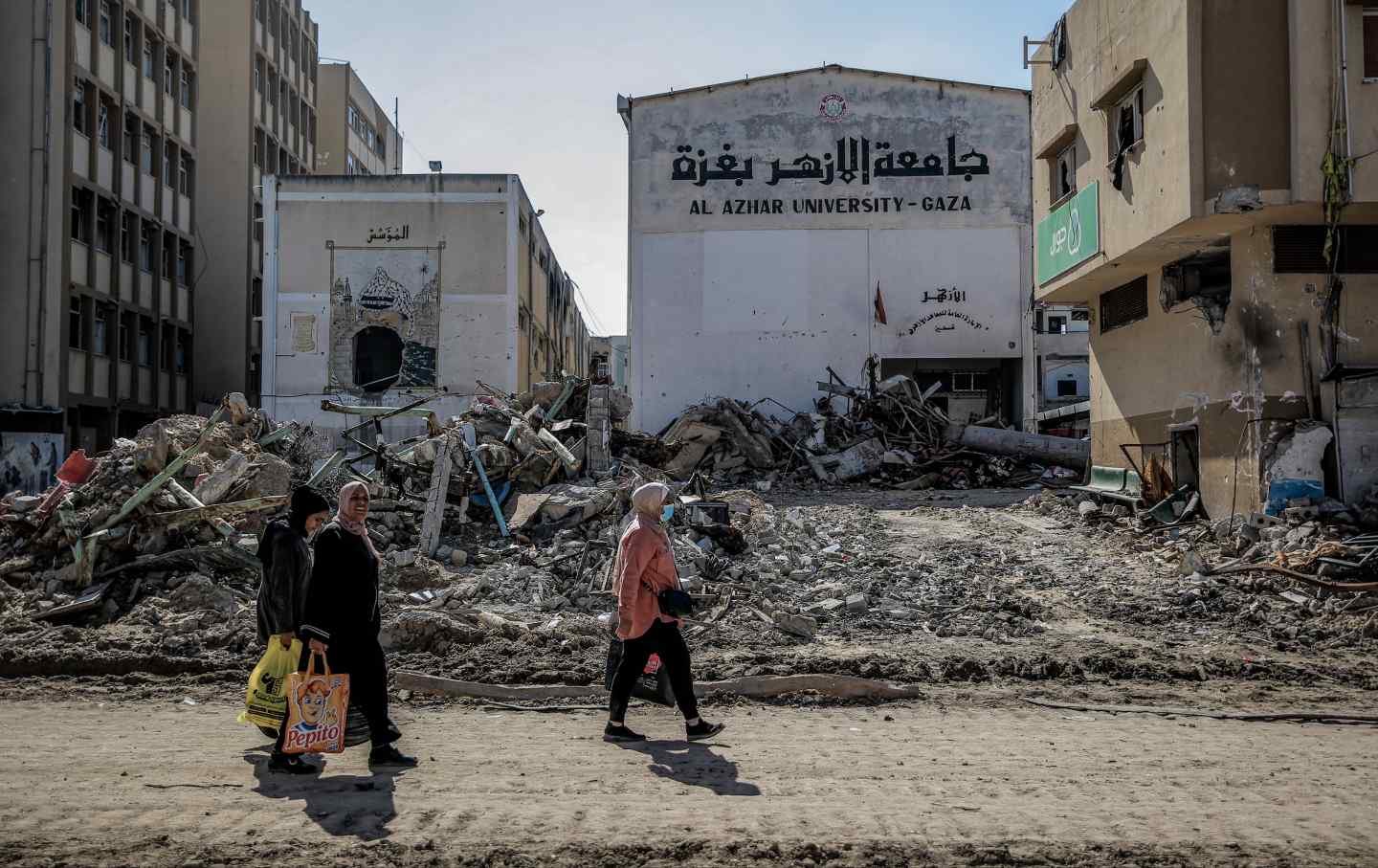
Every University in Gaza Has Been Destroyed. So Have These Students’ Dreams. Every University in Gaza Has Been Destroyed. So Have These Students’ Dreams.
The class of 2024 was supposed to graduate this year. Instead, they are trapped in the hell of Gaza, and their futures are unknown.
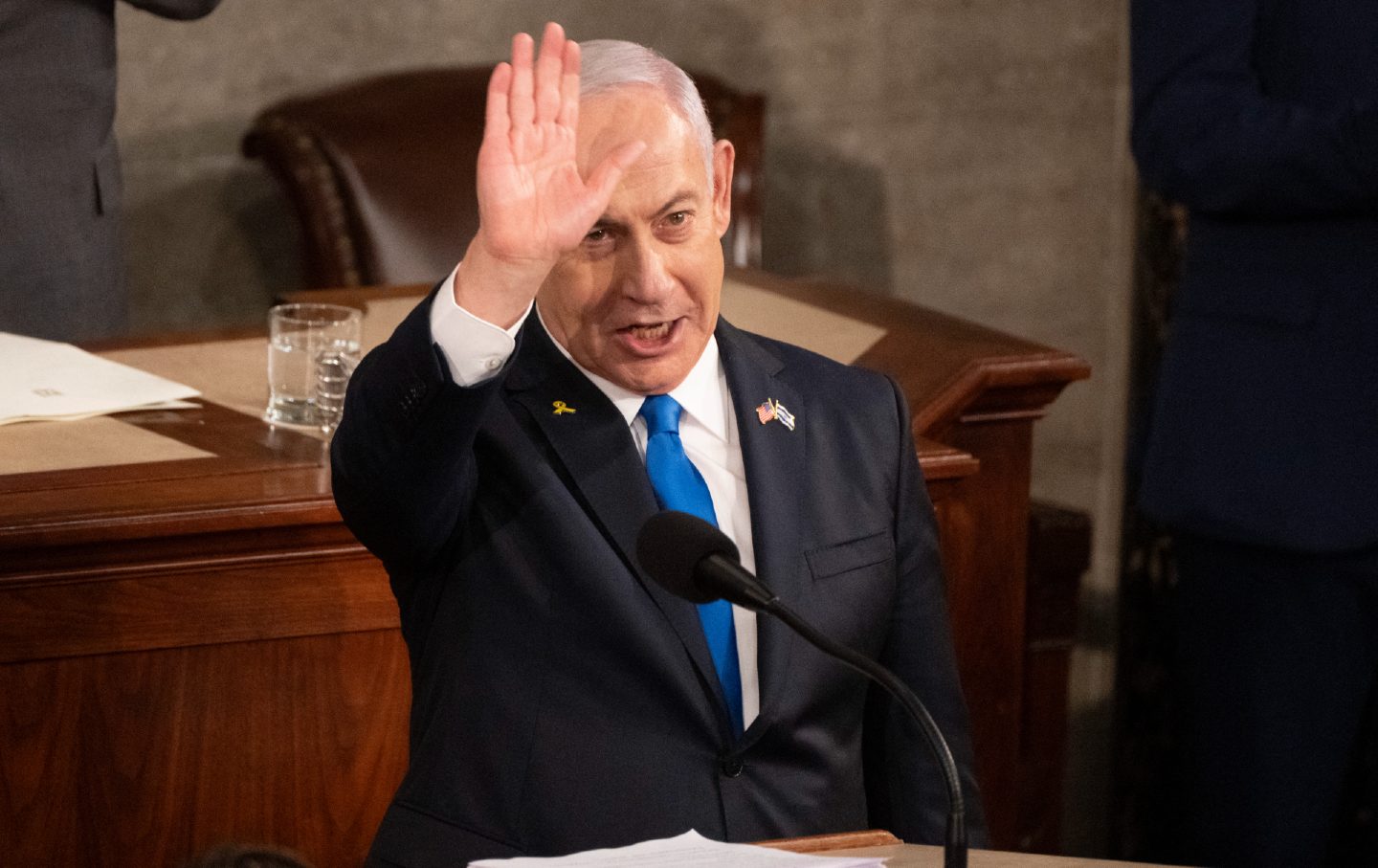
Netanyahu’s Theater of the Grotesque Netanyahu’s Theater of the Grotesque
Yesterday, Congress lauded and applauded the Israeli prime minister, who has been accused of war crimes by the ICC, even as his victims continued to die in Gaza.

Palestinian Olympians Are Competing as Their World Burns Palestinian Olympians Are Competing as Their World Burns
Palestinian Olympians will make history in Paris, despite unfathomable conditions of genocide.
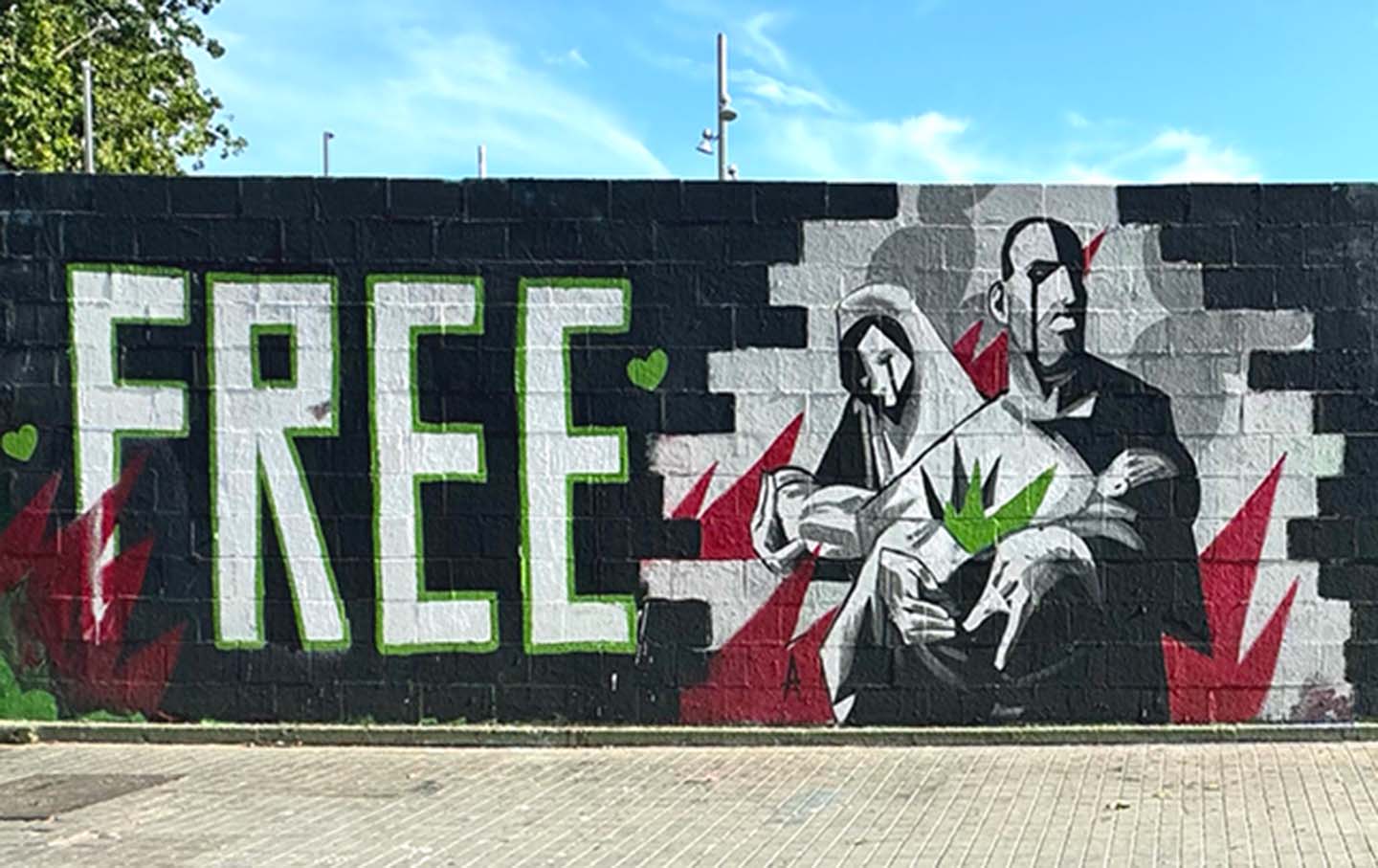
International Solidarity With Palestine International Solidarity With Palestine
Street mural, Barcelona, Catalunya, Spain.
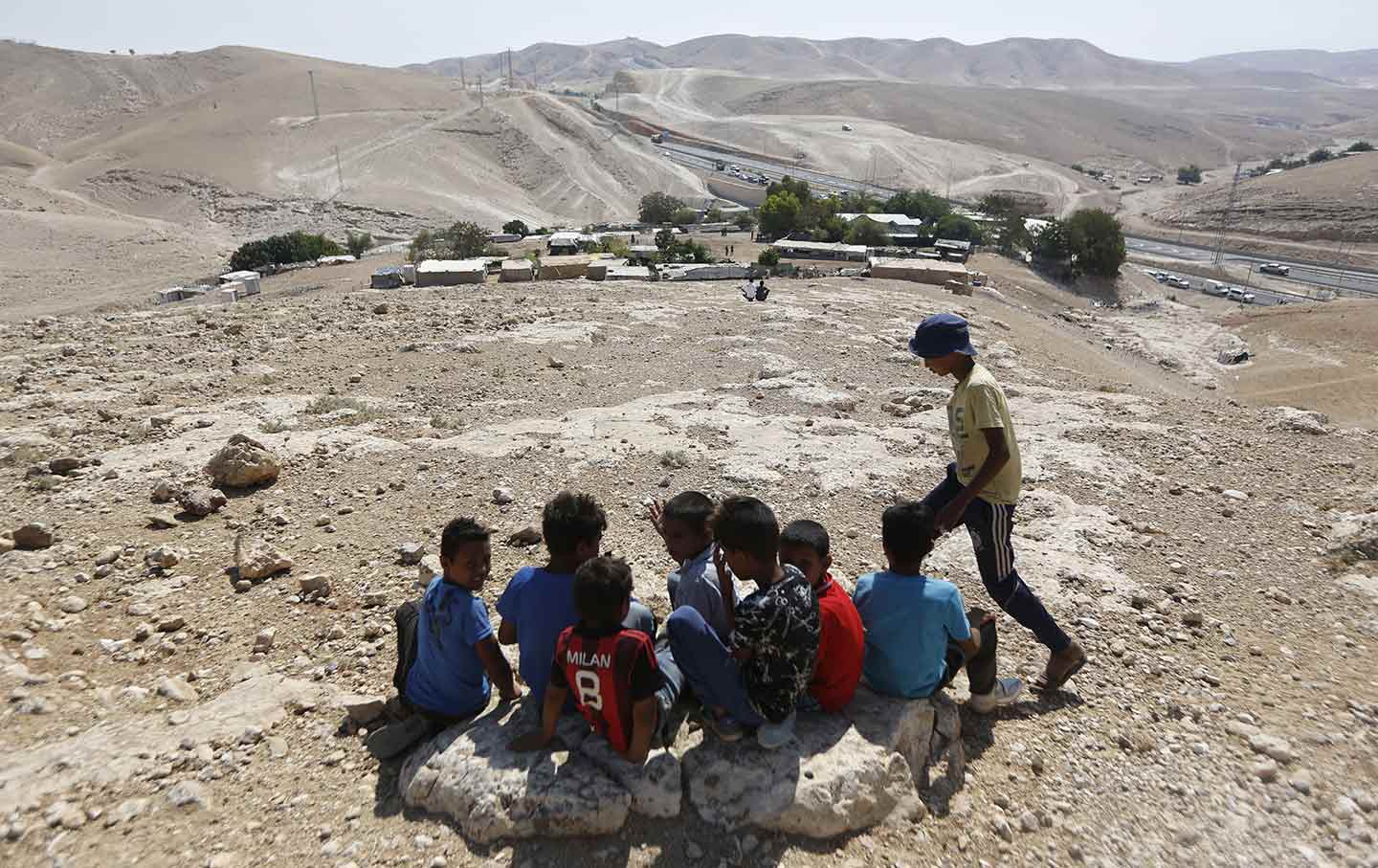
The Horror in Israel and Palestine Began Half a Century Ago The Horror in Israel and Palestine Began Half a Century Ago
From the very start, Jewish violence has accompanied the proliferation of settlements.
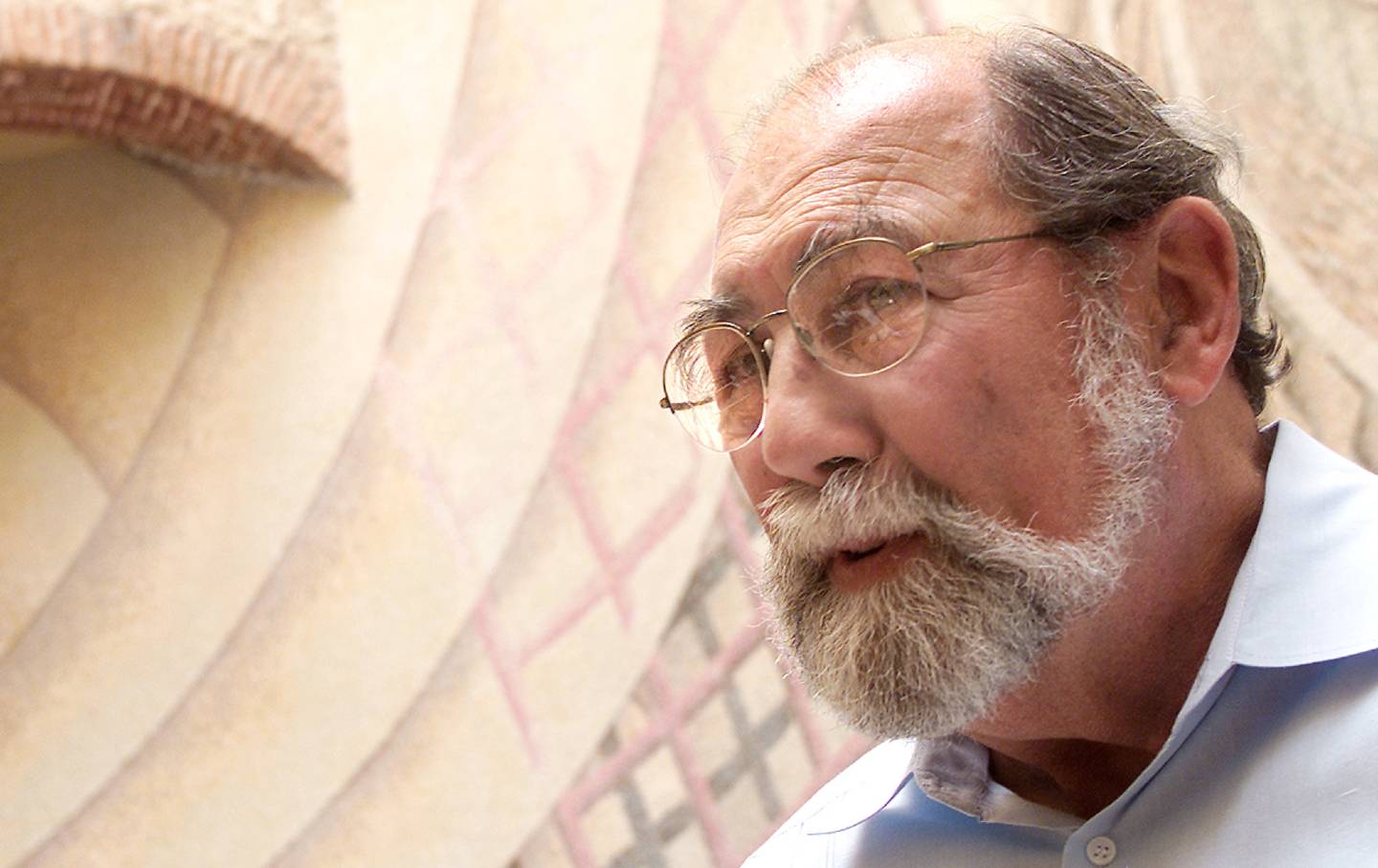
Wayne Smith Devoted His Career to Dialogue and Diplomacy Wayne Smith Devoted His Career to Dialogue and Diplomacy
The former Foreign Service officer liked to say “Cuba seems to have the same effect on American administrations as the full moon has on werewolves.”


